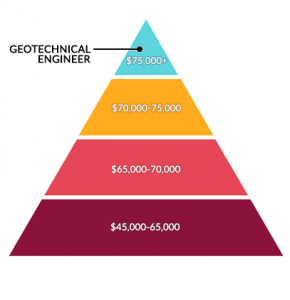Geotheta Fundamentals Explained
Geotheta Fundamentals Explained
Blog Article
The Geotheta Statements
Table of ContentsSome Of GeothetaGetting My Geotheta To WorkThe 25-Second Trick For GeothetaGeotheta for Dummies
They work together with civil engineers, structural designers, architects, and various other specialists to integrate geotechnical considerations right into the total job style and construction process. This calls for efficient synergy, control, and interaction to make certain that the geotechnical facets line up with the project purposes and satisfy regulative demands.Mining & Materials Engineering: Concepts of drilling, infiltration rates, and factors influencing the choice of boring method. Blasting methods in surface area and underground functions. Mechanical and continuous strategies to fragmentation, including longwall shearing and fullface boring.
Modelling of fragment and bit size distributions; comminution as a transfer feature. Comminution innovation: crushing, grinding, size category. Integrated analysis of fragmentation and comminution operations. Offered by: Mining & Products Design.
The Single Strategy To Use For Geotheta
Bachelor's level programs in civil, geotechnical, geological, and environmental engineering generally last four years and include general education programs in English, social scientific research, and the liberal arts, as well as programs in sophisticated maths, architectural geology, and fluid mineralogy. (https://gravatar.com/exactlypainterdeb7b76e1a)
Geotechnical engineering involves the evaluation of the dirt and rock conditions at a specific website, and their ramifications for the advancement of that website. As most frameworks depend on the ground for assistance, it is without shock that a detailed understanding of the ground conditions, and the viability of foundation systems, are vital to the long-lasting security and efficiency of the building or structure.
Being experts in the investigation of geological formations and ground behavior, geotechnical designers carry out clinical investigations and testing to understand the effect these geological formations may have on the layout and construction of building, civil and facilities projects. This know-how is critical for the design and construction of buildings, roads, passages, dams, bridges, and water supply and sewer system.
The geotechnical team at Douglas Allies routinely seek advice from designers, style designers, designers, and building contractors to make recommendations on design and development proposals to make certain that the constructed frameworks are accordingly made for the ground conditions. The style of footing systems requires to think about the weight of the structure, the ability of the ground to sustain that weight with each other with activity resistances and effective building.
The Best Guide To Geotheta
This job is substantially simplified by the usage of our Douglas Map geospatial system which makes this info readily accessible in a simple to utilize web browser user interface. A geotechnical engineer will certainly guide the boring of boreholes and examination pits to accumulate soil and various other samples, and also assess surface attributes and ground direct exposures to develop a geotechnical model of the subsurface problems.
Depending upon the task type and ground conditions ran into, lab screening may amongst other points evaluate toughness, compressibility, sensitivity and/or permeability of soil and rock examples. Hereafter information is gathered and collated, the outcomes are utilized for a geotechnical version of the website, which is generally offered as sections across the website.

A geotechnical investigation naturally can only examine the ground problems at the areas drilled or excavated. Natural variants in dirt and rock problems can occur across a site and in between test areas. It is for that reason great technique that the geotechnical engineer be kept throughout building and construction of the task to provide on-site verification that the ground conditions experienced follow the assumptions and advice offered in the geotechnical investigation report.
Unknown Facts About Geotheta
Geotechnical designers use their in-depth knowledge of soil and rock to analyze risk and address troubles on diverse facilities projectsGeotechnical design is a specialist branch of civil engineering which looks at the Check Out Your URL behaviour of planet products and the application of soil and rock auto mechanics. Engineer of Record. As a geotechnical designer, you will examine the physical, mechanical and chemical buildings of soil and rock in order to design structures, maintaining frameworks and earthworks
Geotechnical design is closely connected to and overlaps with, both design geology and ground engineering - https://www.mixcloud.com/geotheta/. It's possible to specialise in geotechnics or help a geotechnical business however be known as an engineering rock hound or a ground designer. As a geotechnical engineer, you'll require to: develop and preserve connections with customers and various other experts entailed in the site, throughout each projectmaintain safety criteria on site bear in mind cost effects when you make recommendationsstudy geological maps and airborne photographs from a variety of sources and from different time periodsexamine building plans to see how viable they are based on your understanding of the siteinvestigate risks or geological hazards for the sitesearch for eco sensitive attributes, such as land fill start to develop accurate and expository ground modelsplan field investigationsdrill and evaluate samples of bedrock, dirt, groundwater and additional products monitor other experts on sitesolve technical problems as they occur, such as unexpected structures at drill sitesmonitor conditions throughout and after construction to ensure structures are stable in the brief and lengthy termadding information accumulated on website to your first researchcreating geotechnical computations, illustrations, and two or three-dimensional computer system versions interpreting the datamaking recommendations about the proposed use of the website

Report this page